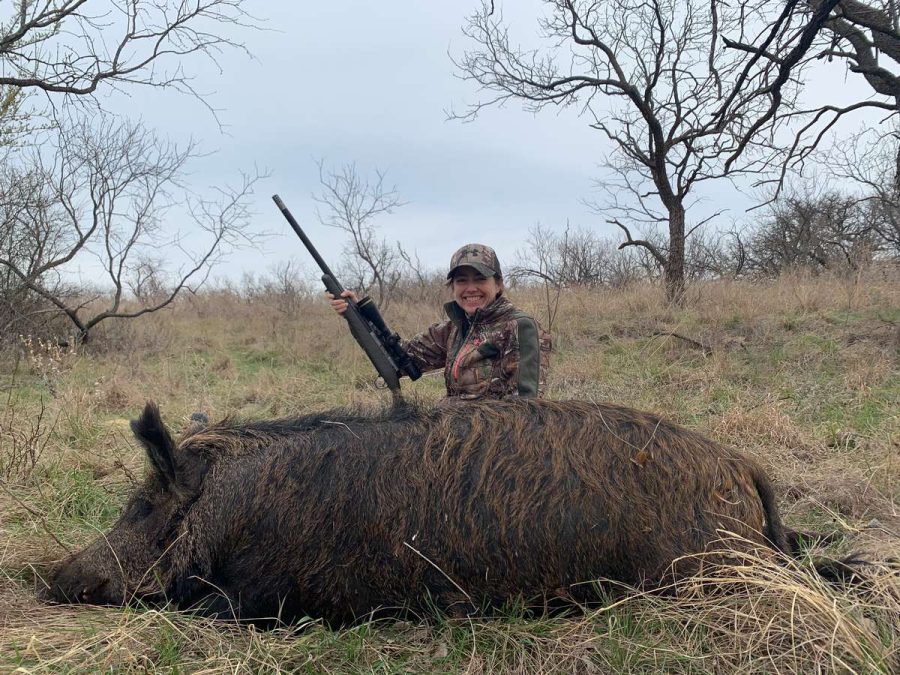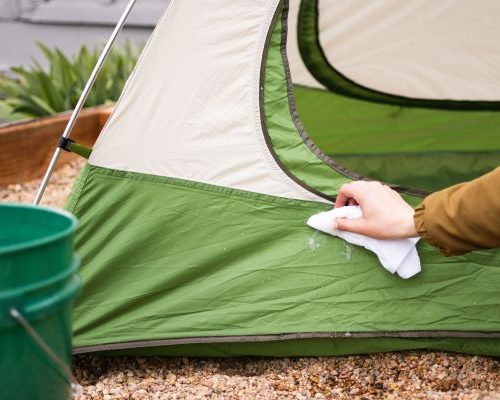Hog hunting, also known as wild boar hunting, is a popular activity in various parts of the world. It combines elements of sport, necessity, and environmental management. Feral hogs, the target of these hunts, are non-native species in many regions, causing significant agricultural damage and disrupting local ecosystems. This article delves into the history, methods, legal considerations, and ecological impacts of hog hunting.
Lets Know The History
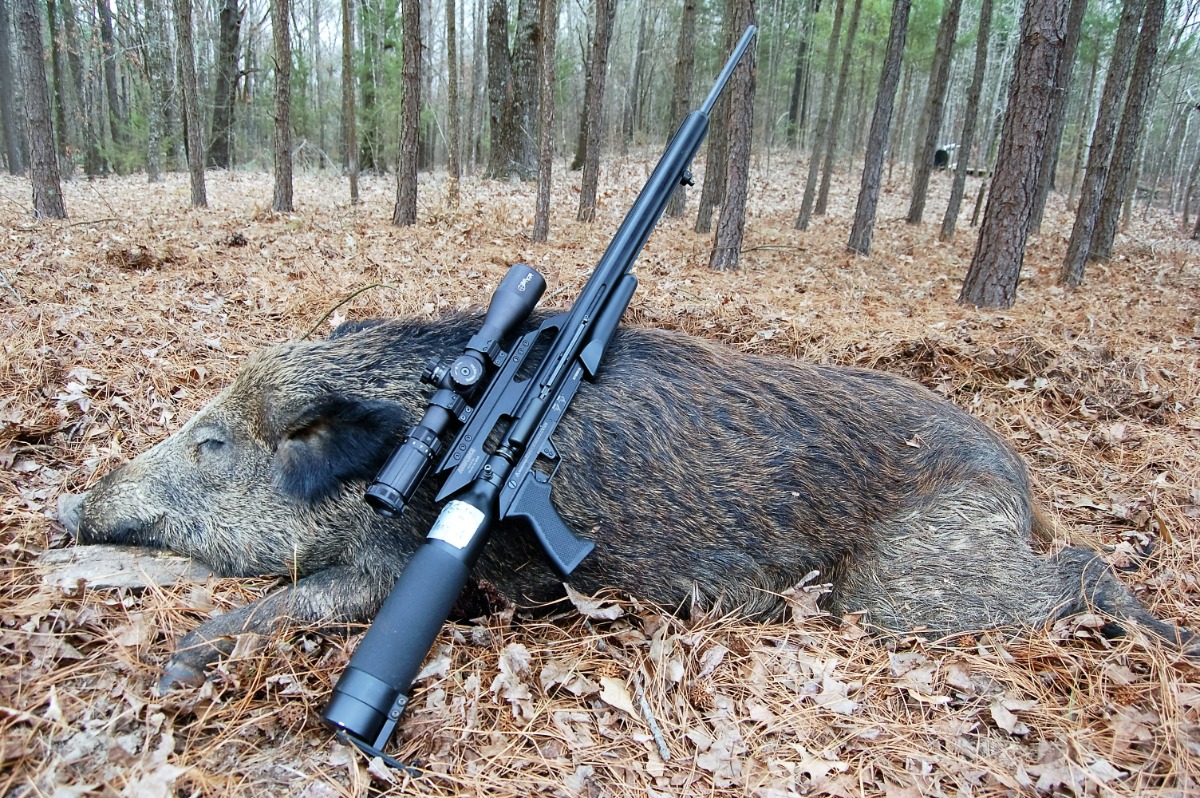
Hog hunting has ancient roots, with evidence suggesting that humans have hunted wild boars since prehistoric times. In ancient Europe, wild boar hunting was a noble pursuit, often depicted in art and literature. During the medieval period, it was a favorite pastime of royalty and the aristocracy, symbolizing bravery and prowess.
In the United States, feral hogs are descendants of domestic pigs brought by early European settlers. Over time, these animals escaped or were released into the wild, where they thrived and multiplied. Today, they are found in at least 35 states, with the highest populations in Texas, Florida, and California.
The Need for Hog Hunting
Feral hogs are invasive species that cause extensive damage to agriculture, property, and natural habitats. They are prolific breeders, capable of producing multiple litters annually. Their foraging habits destroy crops, pastures, and native plant species, leading to soil erosion and water contamination. Additionally, feral hogs compete with native wildlife for food and habitat, posing a threat to biodiversity.
Effective hog hunting helps control their population, mitigating the economic and environmental damage they cause. It also provides a source of meat, which can be a sustainable and ethical choice for hunters.
Methods of Hog Hunting
There are various methods employed in hog hunting, each with its own techniques, advantages, and challenges.
Spot and Stalk Hunting:
This method involves locating hogs from a distance and then stalking them to a closer range for a shot. It requires patience, stealth, and knowledge of hog behavior. Hunters often use binoculars and spotting scopes to identify their targets.
Still Hunting:
In still hunting, hunters move slowly and quietly through hog habitats, looking for signs such as tracks, rooting, and wallows. This method demands a keen sense of awareness and the ability to move stealthily.
Dog Hunting:
Trained dogs are used to track, bay, or catch hogs. Bay dogs corner the hog and bark to alert hunters, while catch dogs physically subdue the hog until the hunter arrives. This method is dynamic and often requires teamwork between hunters and their dogs.
Stand Hunting:
Hunters use elevated stands or blinds placed near known hog trails or feeding areas. This method is similar to deer hunting and allows hunters to wait for hogs to come into range, providing a stable shooting platform.
Night Hunting:
Feral hogs are primarily nocturnal, making night hunting an effective method. Hunters use spotlights, night vision, or thermal imaging equipment to locate hogs in the dark. Night hunting requires specialized gear and knowledge of nighttime behavior.
Trapping:
Large cage traps or corral traps are set up in areas frequented by hogs. These traps can capture multiple animals at once and are useful for reducing populations in specific areas. Trapping requires regular monitoring and maintenance.
Legal and Ethical Considerations
Hog hunting regulations vary by state and country. Hunters must familiarize themselves with local laws regarding hunting seasons, permissible methods, and licensing requirements. In many regions, feral hogs are classified as nuisance animals, allowing for year-round hunting with fewer restrictions.
Ethical hog hunting practices emphasize humane treatment and respect for wildlife. Hunters should aim for quick, clean kills to minimize suffering. Proper handling and utilization of the meat are also important aspects of ethical hunting.
Ecological and Economic Impacts
Effective hog hunting can significantly reduce the negative impacts of feral hogs on ecosystems and agriculture. By controlling their populations, hunters help protect native species, preserve habitats, and reduce economic losses for farmers and landowners. Additionally, hog hunting can contribute to local economies through hunting-related tourism and the sale of hunting gear and licenses.
Hog hunting is a multifaceted activity with deep historical roots and contemporary significance. It serves as a means of population control for an invasive species that poses ecological and economic threats. Employing various hunting methods, adhering to legal regulations, and practicing ethical hunting are essential for sustainable hog management. Through responsible hunting, we can mitigate the negative impacts of feral hogs while enjoying the rich tradition and challenge of the hunt.
Essential Tools and Equipment for Hog Hunting
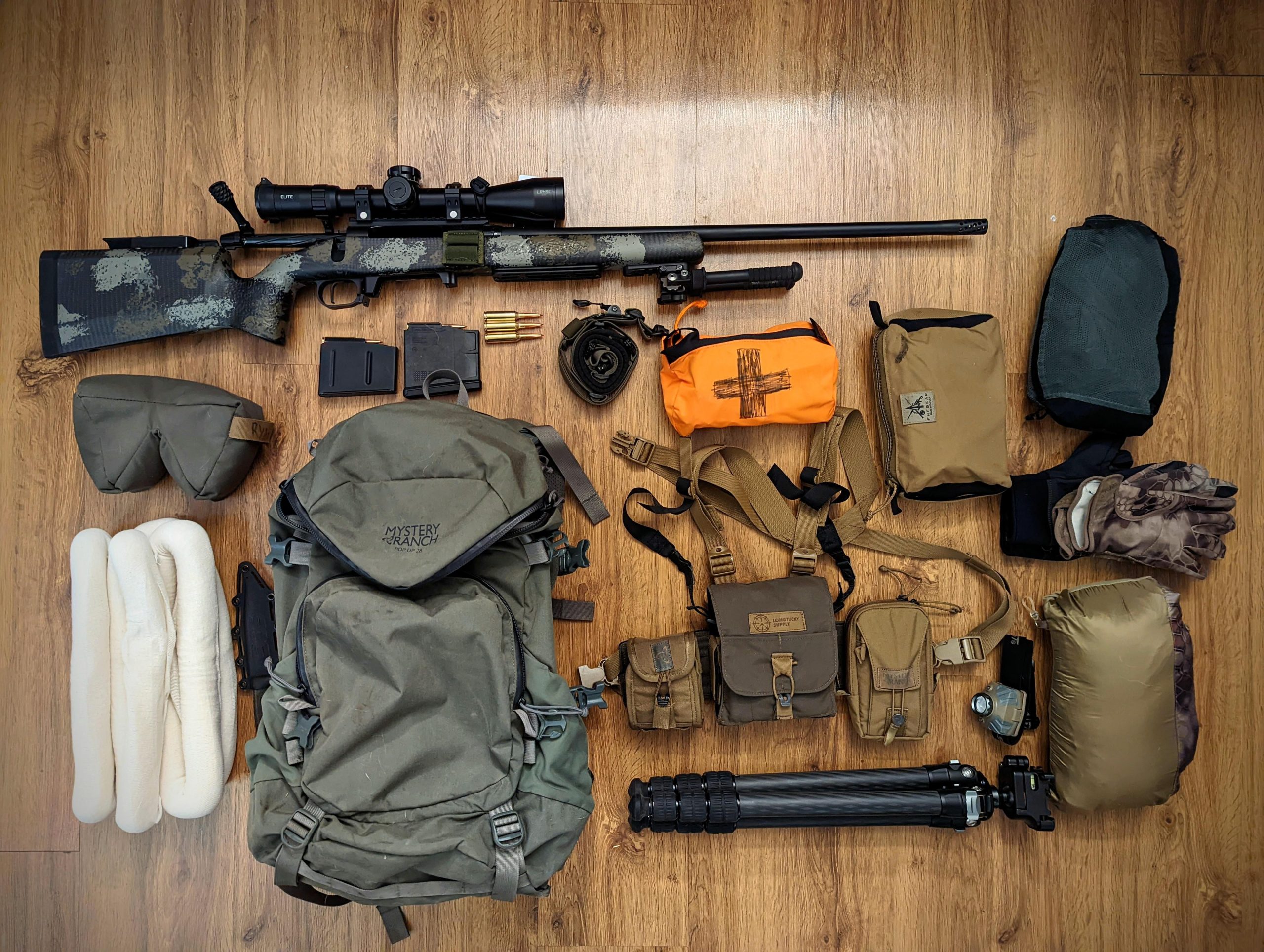
Hog hunting is a demanding and dynamic activity that requires a variety of tools and equipment to ensure success and safety. Whether you are a seasoned hunter or a beginner, having the right gear can make a significant difference in your hunting experience. Here is a comprehensive list of essential tools and equipment for hog hunting:
1. Firearms and Ammunition
- Rifles: High-powered rifles are the most common choice for hog hunting due to their accuracy and range. Popular calibers include .30-06, .308 Winchester, and .270 Winchester.
- Shotguns: For close-range encounters, 12-gauge shotguns loaded with buckshot or slugs can be very effective.
- Handguns: Some hunters prefer large-caliber handguns for close-range shots. Popular choices include .44 Magnum and .357 Magnum.
- Ammunition: Choose high-quality, reliable ammunition suitable for the type of firearm you are using. Soft point or hollow point bullets are preferred for their stopping power.
2. Optics
- Binoculars: Essential for spotting hogs from a distance and scanning large areas. Look for models with good magnification and light-gathering capabilities.
- Scopes: A quality rifle scope enhances accuracy and allows for precise shots. Consider scopes with variable magnification and illuminated reticles for low-light conditions.
- Night Vision and Thermal Imaging: Since hogs are often active at night, night vision goggles or thermal scopes can be invaluable for locating and tracking them in the dark.
3. Hunting Blinds and Stands
- Ground Blinds: Portable and easy to set up, ground blinds provide concealment and a stable shooting platform.
- Tree Stands: Elevated stands offer a better vantage point and help keep your scent off the ground. Ladder stands, climbing stands, and hang-on stands are popular options.
4. Hunting Dogs
- Bay Dogs: These dogs track and corner hogs, alerting hunters with their barking.
- Catch Dogs: Trained to physically subdue hogs, catch dogs hold the animal in place until the hunter arrives.
5. Trapping Equipment
- Cage Traps: Large traps that can capture multiple hogs at once. They are often baited with food to attract hogs.
- Corral Traps: Larger, more permanent structures that can capture entire groups of hogs. They are effective for managing populations in specific areas.
6. Protective Gear
- Clothing: Durable, camouflaged clothing helps you blend into your surroundings. Consider moisture-wicking and scent-blocking fabrics.
- Boots: Waterproof, snake-proof boots provide protection and comfort when navigating rough terrain.
- Gloves: Protect your hands from cuts, bites, and the elements with sturdy gloves.
7. Safety Gear
- First Aid Kit: Essential for treating minor injuries and addressing emergencies in the field.
- GPS and Compass: Helps with navigation and ensures you don’t get lost in unfamiliar territory.
- Communication Devices: Walkie-talkies or satellite phones are crucial for staying in contact with hunting partners.
8. Field Dressing Tools
- Knives: A sharp, sturdy hunting knife is necessary for field dressing and butchering hogs. Consider carrying a skinning knife and a boning knife as well.
- Game Bags: Used to transport meat and keep it clean during transport.
- Gloves: Disposable gloves help maintain hygiene during field dressing.
9. Bait and Attractants
- Feeders: Automated feeders dispense bait at regular intervals, attracting hogs to a specific area.
- Bait: Common baits include corn, grains, and commercial hog attractants. Some hunters also use fermented foods for a stronger scent.
10. Miscellaneous Tools
- Flashlights and Headlamps: Essential for navigating and working in low-light conditions.
- Rangefinders: Help estimate the distance to your target, improving accuracy.
- Coolers: Large coolers are necessary for storing meat and keeping it fresh during transport.
Having the right tools and equipment is crucial for a successful and safe hog hunting experience. From firearms and optics to protective gear and field dressing tools, each item plays a vital role in the hunt. By preparing thoroughly and equipping yourself with quality gear, you can enhance your efficiency and enjoyment in the field while contributing to effective hog population management.
Tips and Tricks for Successful Hog Hunting
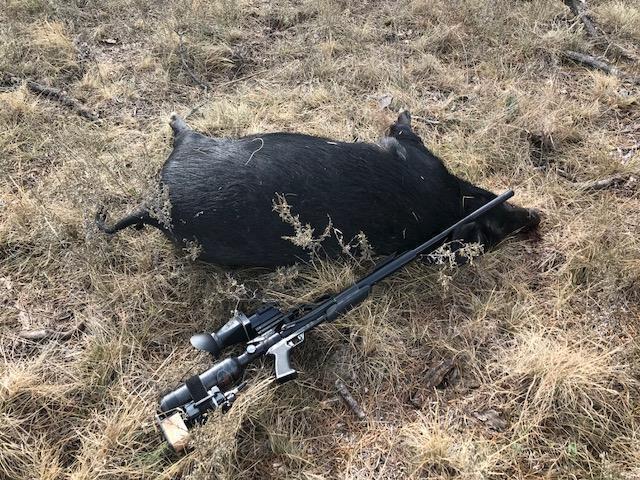
Hog hunting can be both challenging and rewarding. Whether you’re a novice or an experienced hunter, these tips and tricks can help you improve your chances of success and enhance your overall hunting experience.
1. Understand Hog Behavior
- Nocturnal Habits: Feral hogs are primarily nocturnal, meaning they are most active during the night. Plan your hunts accordingly, utilizing night vision or thermal optics for effective night hunting.
- Feeding Patterns: Hogs are opportunistic feeders. They often follow predictable patterns, feeding in the early morning and late evening. Scout for areas with abundant food sources like agricultural fields, oak forests with acorns, and areas with water access.
- Wallows and Rubs: Hogs use wallows to cool down and rid themselves of parasites. Look for muddy areas near water sources. Rubs on trees and fence posts can also indicate hog presence.
2. Scout and Track
- Trail Cameras: Set up trail cameras in potential hog hotspots to monitor their activity and identify the best times to hunt.
- Footprints and Droppings: Learn to identify hog tracks and droppings. Fresh tracks and droppings indicate recent activity.
- Rooting: Hogs root up the ground searching for food, leaving distinct areas of disturbed soil. Fresh rooting is a strong indicator of hog presence.
3. Use Effective Baiting Techniques
- Corn and Grains: Corn is a popular and effective bait. Scatter it in areas where you’ve seen hog activity or use feeders to dispense it over time.
- Fermented Bait: Fermenting corn or grains in a mixture of water, sugar, and yeast creates a potent scent that attracts hogs from a distance.
- Commercial Attractants: There are various commercial hog attractants available that can enhance the appeal of your bait site.
4. Optimize Your Hunting Setup
- Stands and Blinds: Use elevated stands or ground blinds to conceal yourself and gain a better vantage point. Place them downwind from your bait site to avoid detection by the hogs’ keen sense of smell.
- Wind Direction: Always consider wind direction when setting up your hunting position. Hogs have an excellent sense of smell and can detect human scent from a long distance.
- Noise Control: Move quietly and minimize noise to avoid spooking hogs. Soft-soled boots and slow, deliberate movements are essential.
5. Choose the Right Firearm and Ammunition
- Caliber Selection: Use a firearm with sufficient stopping power. Popular choices include .30-06, .308 Winchester, and .270 Winchester for rifles, and 12-gauge shotguns with buckshot or slugs.
- Shot Placement: Aim for the vitals to ensure a quick, humane kill. The heart and lungs are located slightly behind the front shoulder.
6. Utilize Hunting Dogs
- Bay Dogs: These dogs are trained to locate and corner hogs, alerting hunters with their barking. They are essential for tracking hogs in dense cover.
- Catch Dogs: Trained to physically hold the hog until the hunter arrives, catch dogs are used in conjunction with bay dogs for a more hands-on hunting approach.
7. Night Hunting Tips
- Night Vision and Thermal Optics: Invest in quality night vision or thermal imaging equipment to detect hogs in low-light conditions.
- Spotlights: Powerful spotlights can illuminate hogs at night. Ensure your spotlight is legal in your hunting area.
- Stealth: Move quietly and minimize light usage until you are ready to take a shot.
8. Safety First
- First Aid Kit: Always carry a first aid kit and know how to use it. Hog hunting can involve rough terrain and potentially dangerous encounters with aggressive hogs.
- Communication Devices: Use walkie-talkies or mobile phones to stay in touch with hunting partners.
- Navigation Tools: Carry a GPS device, compass, and map to avoid getting lost, especially in unfamiliar areas.
9. Field Dressing and Meat Handling
- Field Dressing: Learn how to field dress a hog properly to preserve the meat. This involves removing the internal organs as soon as possible to cool the carcass.
- Meat Transportation: Use game bags and coolers to transport the meat and keep it fresh. Consider the logistics of getting a large hog out of the field, especially in remote areas.
10. Respect the Environment and Laws
- Legal Regulations: Familiarize yourself with local hunting laws and regulations regarding hog hunting. This includes licensing, permissible methods, and hunting seasons.
- Landowner Permission: Always obtain permission if hunting on private land. Building good relationships with landowners can provide more hunting opportunities.
- Ethical Hunting: Practice ethical hunting by making clean, humane kills and utilizing as much of the harvested animal as possible.
Why Hog Hunting is Popular Among Americans
Hog hunting has grown in popularity across the United States for several reasons. This unique form of hunting offers a blend of challenge, utility, and excitement that appeals to a wide range of outdoor enthusiasts. Here’s an in-depth look at the factors driving the popularity of hog hunting among Americans.
1. Proliferation of Feral Hogs
The burgeoning population of feral hogs in the U.S. is a primary driver behind the popularity of hog hunting. Feral hogs are found in at least 35 states, with particularly large populations in Texas, Florida, and California. Their rapid reproduction rate and adaptability have led to widespread ecological and agricultural damage, necessitating active population control measures. Hunters play a crucial role in managing these populations, making hog hunting both a sport and a practical solution to an environmental problem.
2. Year-Round Hunting Opportunities
Unlike many other game species, which have specific hunting seasons, feral hogs can often be hunted year-round. This provides hunters with a continuous opportunity to engage in their hobby, without the constraints of seasonal restrictions. The ability to hunt throughout the year appeals to those who seek consistent outdoor activities and adventure.
3. Minimal Hunting Regulations
In many states, the classification of feral hogs as nuisance animals means there are fewer regulations governing their hunting. This can include lenient licensing requirements, no bag limits, and the use of various hunting methods such as night hunting and the use of bait. These relaxed regulations make it easier for hunters to participate and experiment with different techniques.
4. Diverse Hunting Methods
Hog hunting accommodates a wide range of hunting styles and preferences, from spot and stalk and still hunting to dog hunting, stand hunting, and trapping. The diversity of methods keeps the activity engaging and allows hunters to develop a variety of skills. This flexibility in hunting techniques attracts both novice and experienced hunters.
5. Challenging and Exciting Pursuit
Feral hogs are intelligent, elusive, and often aggressive animals, providing a challenging and thrilling hunting experience. Their keen senses and unpredictable behavior demand a high level of skill and strategy from hunters. The adrenaline rush and sense of accomplishment that come with successfully tracking and harvesting a wild hog are significant draws for many enthusiasts.
6. Economic Benefits
The growing popularity of hog hunting has economic benefits for rural communities. Hunters contribute to the local economy by spending on licenses, equipment, guides, lodging, and other related expenses. Additionally, some landowners offer paid hog hunting opportunities on their properties, creating a source of income and incentivizing the control of feral hog populations.
7. Culinary Appeal
Wild hog meat, known as wild boar, is prized for its flavor and can be a sustainable and ethical source of protein. The opportunity to harvest and prepare wild game appeals to hunters who value self-sufficiency and organic food sources. Many hunters take pride in the culinary aspects of their hunts, sharing recipes and cooking techniques for wild boar meat.
8. Community and Tradition
Hog hunting fosters a sense of community among hunters. Whether participating in organized hunts, joining hunting clubs, or simply sharing stories and tips with fellow hunters, the activity builds camaraderie and a shared sense of purpose. Additionally, for some, hog hunting is a tradition passed down through generations, reinforcing familial bonds and cultural heritage.
9. Conservation and Land Management
By participating in hog hunting, hunters contribute to broader conservation and land management efforts. Reducing feral hog populations helps protect native wildlife, preserve habitats, and mitigate agricultural damage. Hunters often collaborate with wildlife agencies and landowners to manage hog populations effectively, demonstrating a commitment to environmental stewardship.
In Conclusion
Hog hunting requires a combination of knowledge, skill, and preparation. By understanding hog behavior, scouting effectively, using the right equipment, and practicing safety and ethics, you can increase your chances of a successful hunt. Whether you hunt for sport, population control, or meat, these tips and tricks will help you become a more proficient and responsible hog hunter. For more hunting ideas you can check our other hunting related blogs.
Hog hunting’s popularity in the United States is driven by a combination of practical necessity, year-round availability, diverse hunting methods, and the thrill of the chase. Its economic benefits, culinary appeal, and contributions to conservation further enhance its appeal. As feral hog populations continue to pose challenges, hog hunting remains a vital and engaging activity for American hunters, blending tradition, community, and a deep connection to the outdoors.
